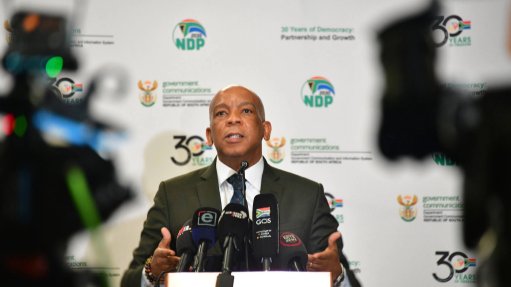Climate change: Part 1
I have decided to write about climate change. I know that, even with that simple sentence, the knives come out, the pistols cock and an army marches against me. But do not fret, my merensky vonnies. I believe climate change is happening.
In Norway, large patches of ice have melted and given up artefacts. The finds are remarkable: iron arrowheads dating back 1 500 years, tunics from the Iron Age and the remains of a wooden ski, complete with leather binding, left behind sometime in the year 700.
This shows two things: Norway has become warm enough to melt ice, which has not happened in recent times, and the discovery of the artefacts shows that the ice has melted before – this is not the first time. Bear in mind that this is ice melting, not a glacier, as glaciers destroy objects that fall down crevasses. The ice moves and grinds up. Ice sheets do not.
So now we have certain proof that the climate of Norway is getting warmer? No, we have proof that the ice has become warmer. This could mean that the air is warmer or the ground is warmer. Now, when I get to this point of the discussion, the climate change people start on about what about the bush fires in Australia, what about the hurricanes in America, what about the famine in wherever. And, most importantly, what about the fact that 97% of scientists agree that climate change is real and man-made and dangerous. Or so said Barack Obama. One thinks that Obama meant ‘climate scientists’, not scientists. But this statement always carries the implication: Who are you to challenge them?
Where does the 97% arise? It seems to me that not many who refer to the 97% have any idea. The basic way it works is that a researcher reviews a lot of scholarly papers and classifies them by how many agree with a certain position. Whatever way, the argument that 97% of anybody agrees to something is no better than an argument that a majority is always right.
If, indeed, the change is that of air temperature, we turn to the US’s National Aeronautics and Space Administration, which advises us that the average temperature of Earth has increased by 1 ºC since 1880. But how do they know? In 1880, there were few weather stations in South Africa. There were very few in the whole of Africa and Australia and New Zealand. Climate scientists can use other means for getting temperature data: tree rings, oxygen isotopes in fossilised shells, ice sampling. But this cannot be representative of temperatures in a whole country.
Michael Mann is best known as the lead researcher in a landmark 1998 paper on climate change. He and three others reconstructed global temperatures going back about 500 years, producing a hockey-stick-like graph of global temperatures (oh, ironically, ice-hockey stick) that showed a sharp upswing beginning in the 1900s. For temperatures before 1700 AD, much reliance has to be placed on tree-ring data: the colder the year, the closer the growth rings on a tree. In this record, 1500 AD to 1900 AD was 1 ºC colder than, for example, 300 AD to 800 AD.
Mann can be regarded as the ‘founder’ of climate change theory. But he only examined trees in Morocco and other locations. No trees in greater Africa. No trees in Australia. His paper is titled ‘Northern Hemisphere Temperatures During the Past Millennium: Inferences, Uncertainties and Limitations’. You see that? Northern hemisphere – not the whole world. But when you see the ‘hockey stick’ graph, you assume it is worldwide. But nevertheless. The ice in Norway is melting. The ice in Switzerland is melting. The Arctic ice is melting. The Antarctic ice is, in fact, growing. Something is happening. In Norway and at other locations, many artefacts have been found under melting ice. It has all happened hundreds of years before, but the question is: Are we making the warming worse?
Article Enquiry
Email Article
Save Article
Feedback
To advertise email advertising@creamermedia.co.za or click here
Comments
Announcements
What's On
Subscribe to improve your user experience...
Option 1 (equivalent of R125 a month):
Receive a weekly copy of Creamer Media's Engineering News & Mining Weekly magazine
(print copy for those in South Africa and e-magazine for those outside of South Africa)
Receive daily email newsletters
Access to full search results
Access archive of magazine back copies
Access to Projects in Progress
Access to ONE Research Report of your choice in PDF format
Option 2 (equivalent of R375 a month):
All benefits from Option 1
PLUS
Access to Creamer Media's Research Channel Africa for ALL Research Reports, in PDF format, on various industrial and mining sectors
including Electricity; Water; Energy Transition; Hydrogen; Roads, Rail and Ports; Coal; Gold; Platinum; Battery Metals; etc.
Already a subscriber?
Forgotten your password?
Receive weekly copy of Creamer Media's Engineering News & Mining Weekly magazine (print copy for those in South Africa and e-magazine for those outside of South Africa)
➕
Recieve daily email newsletters
➕
Access to full search results
➕
Access archive of magazine back copies
➕
Access to Projects in Progress
➕
Access to ONE Research Report of your choice in PDF format
RESEARCH CHANNEL AFRICA
R4500 (equivalent of R375 a month)
SUBSCRIBEAll benefits from Option 1
➕
Access to Creamer Media's Research Channel Africa for ALL Research Reports on various industrial and mining sectors, in PDF format, including on:
Electricity
➕
Water
➕
Energy Transition
➕
Hydrogen
➕
Roads, Rail and Ports
➕
Coal
➕
Gold
➕
Platinum
➕
Battery Metals
➕
etc.
Receive all benefits from Option 1 or Option 2 delivered to numerous people at your company
➕
Multiple User names and Passwords for simultaneous log-ins
➕
Intranet integration access to all in your organisation


















